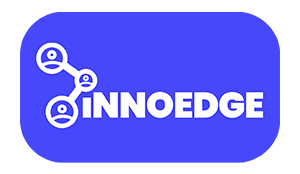In today’s fast-paced economic environment, staying ahead of market trends is crucial for business success. Artificial intelligence (AI) has emerged as a powerful tool for predicting economic trends, offering unparalleled insights and enabling businesses to make informed strategic decisions. This article explores how AI can analyze market data to predict economic trends and inform business strategies, supported by statistics and real-world applications.
The Power of AI in Market Prediction
Enhanced Data Processing and Analysis
AI excels at processing vast amounts of data from diverse sources, including financial reports, news articles, social media, and market indicators. By leveraging machine learning algorithms, AI can identify patterns and correlations that human analysts might overlook. This capability allows businesses to anticipate market movements and adjust their strategies accordingly (TechBullion) (IBM – United States).
Predictive Analytics for Strategic Decision-Making
Predictive analytics, a subset of AI, enables businesses to forecast future market conditions based on historical data. Machine learning models can learn from past trends to predict stock prices, commodity fluctuations, and consumer behavior. These predictions help businesses optimize operations, manage risks, and capitalize on emerging opportunities (TechBullion).
Real-Time Monitoring and Adaptation
AI systems provide real-time monitoring of market conditions, allowing businesses to respond swiftly to changes. Automated trading algorithms, for example, can execute trades within milliseconds, capitalizing on market opportunities faster than human traders. This speed and efficiency are critical in volatile markets where timing is everything (TechBullion) (NVIDIA Blog).
Real-World Applications and Benefits
Improved Market Efficiency
AI contributes to market efficiency by reducing information asymmetry. By integrating data from various sources, AI ensures that market prices reflect all available information, leading to fairer and more transparent markets. This efficiency benefits businesses and consumers by fostering a more predictable economic environment (TechBullion).
Cost Reduction and Increased Profitability
Automation of trading processes and market analysis reduces the need for extensive human intervention, lowering operational costs. AI can also minimize errors and reduce financial losses, further enhancing profitability. For instance, AI-driven algorithms have helped hedge funds outperform traditional funds by leveraging predictive analytics to make better investment decisions (TechBullion) (NVIDIA Blog).
Enhanced Risk Management
AI’s ability to predict market downturns and identify potential risks allows businesses to develop robust risk management strategies. By anticipating adverse market conditions, companies can implement measures to mitigate losses and protect their assets. This proactive approach to risk management is essential for maintaining stability in uncertain economic climates (IBM – United States) (MarketsandMarkets).
Key Takeaways
- Data Processing: AI processes vast amounts of data from diverse sources, providing comprehensive market analysis.
- Predictive Analytics: AI predicts future market trends, enabling informed strategic decisions.
- Real-Time Monitoring: AI offers real-time market monitoring and rapid response capabilities.
- Market Efficiency: AI reduces information asymmetry, leading to fairer and more transparent markets.
- Cost Reduction: Automation reduces operational costs and minimizes errors, enhancing profitability.
- Risk Management: AI helps businesses anticipate and manage market risks effectively.
Conclusion
AI’s role in market prediction is transforming the way businesses approach economic trends. By providing powerful tools for data analysis, predictive analytics, and real-time monitoring, AI enables businesses to stay ahead of the curve and make informed strategic decisions. As AI technology continues to evolve, its impact on market prediction and business strategy will only grow, offering even greater potential for innovation and growth.



